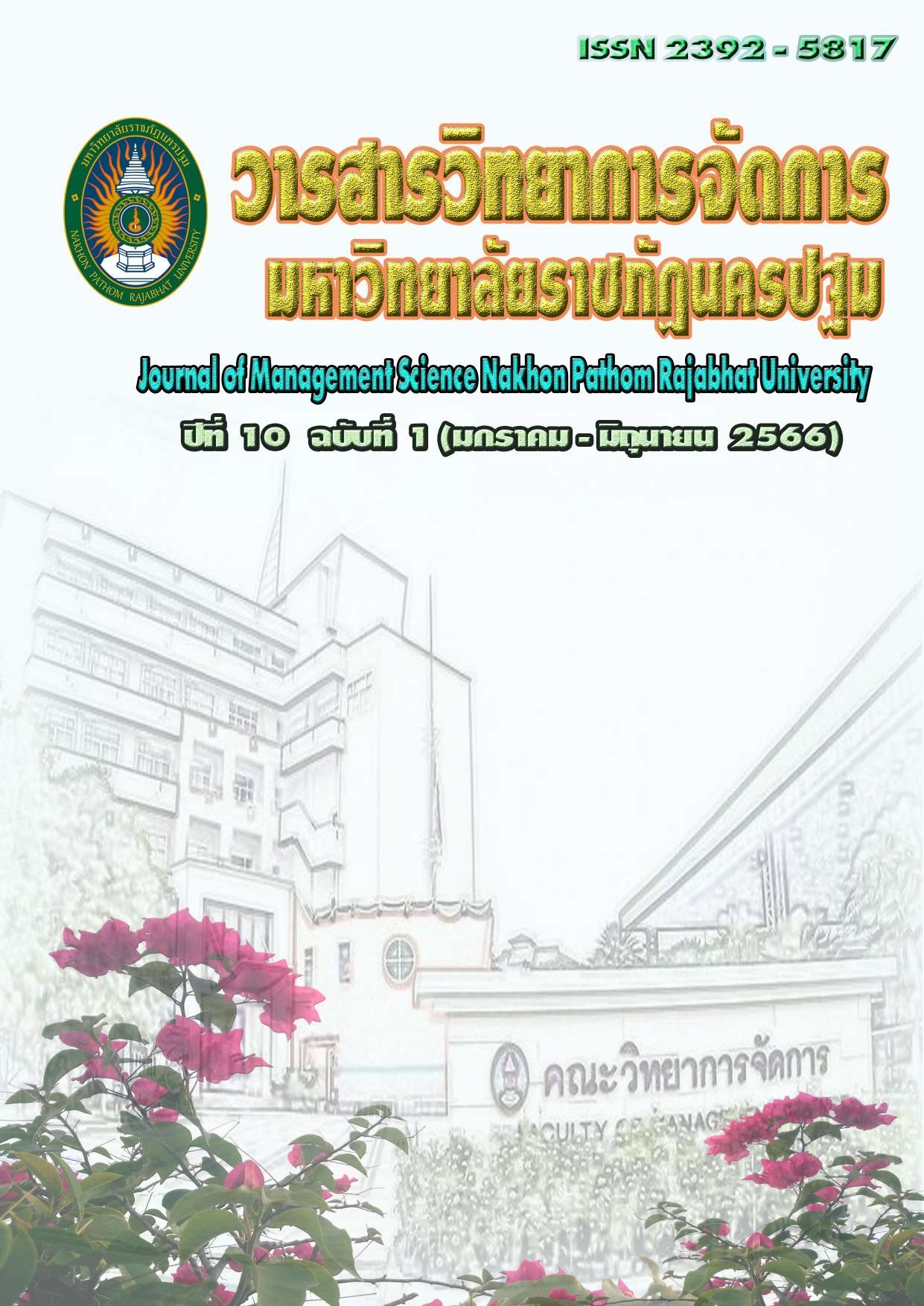การวิเคราะห์ความสัมพันธ์ระหว่างรายได้ รายจ่าย และผลิตภัณฑ์มวลรวมของรัฐบาล: หลักฐานเชิงประจักษ์จาก สาธารณรัฐประชาธิปไตยประชาชนลาว
Main Article Content
บทคัดย่อ
ผลการดำเนินงานรายรับ-รายจ่ายของรัฐบาลบ่งชี้ถึงฐานะทางการเงินของรัฐบาล และเป็นตัวบ่งชี้ที่สำคัญสำหรับการวางแผนพัฒนาเศรษฐกิจมหภาค ดังนั้น ผู้วิจัย จึงมีวัตถุประสงค์เพื่อทดสอบความสัมพันธ์ระหว่างรายรับ รายจ่าย และผลิตภัณฑ์มวลรวมภายในประเทศ ของรัฐบาลลาวโดยใช้แบบจำลองทางเศรษฐมิติโครอินทิเกรชัน และ แบบจำลองเอเรอร์คอร์เรคชัน กับข้อมูลอนุกรมเวลาตั้งแต่ปี 1990-2019
ผลการศึกษาพบ ความสัมพันธ์ทั้งในระยะสั้นและระยะยาว ในระยะยาวพบว่ามีความสัมพันธ์ของ รายได้และ ผลิตภัณฑ์มวลรวมภายในประเทศ มีความสัมพันธ์เชิงบวกอย่างมีนัยสำคัญกับรายจ่ายโดยมีระดับนัยสำคัญที่ 0.01 และ 0.1 ตามลำดับ สำหรับระยะสั้น พบว่ารายได้ของรัฐบาลเท่านั้นที่มีความสัมพันธ์กับการใช้จ่ายของรัฐบาลอย่างมีนัยสำคัญทางสถิติที่ระดับนัยสำคัญที่ 0.01 โดยมีค่าสัมประสิทธิ์ของ เงื่อนไขการแก้ไขข้อผิดพลาด (ECT) เท่ากับ -0.781 ในการทดสอบ การกระจายค่าปกติที่เหลือ และ สหสัมพันธ์เชิงอนุกรม บ่งชี้ว่าเราไม่สามารถปฏิเสธสมมติฐานว่างได้ หมายความว่าแบบจำลองที่ใช้ในการศึกษานี้เหมาะสำหรับการทดสอบความสัมพันธ์ระหว่างรายรับ รายจ่าย และผลิตภัณฑ์รวมในประเทศ ของ สปป.ลาว นอกจากนี้ ผู้วิจัยยังเสนอว่ารัฐบาลควรตัดสินใจ ด้านรายจ่ายและรายรับควบคู่กันไปโดยเพิ่มรายได้และลดรายจ่ายไปพร้อมกันเพื่อบริหารการขาดดุลงบประมาณเนื่องจากการใช้จ่ายภาครัฐที่เพิ่มขึ้นจะช่วยกระตุ้นกิจกรรมทางเศรษฐกิจซึ่งจะส่งผลให้รายได้ของรัฐบาลเพิ่มขึ้น
ข้อจำกัด การศึกษานี้ใช้กลุ่มตัวอย่างขนาดเล็ก และเป็นการศึกษาเพียงประเทศเดียว ดังนั้น นักวิจัยที่จะศึกษาเพิ่มเติมควรพิจารณาข้อมูลแบบกลุ่มและใช้ตัวแปรอิสระมากขึ้นเพื่อให้สามารถทำนายได้แม่นยำยิ่งขึ้น
*คณะเศรษฐศาสตร์และการท่องเที่ยว มหาวิทยาลัยสุภานุวงศ์ สปป.ลาว
Corresponding author: somsanith.jr@gmail.com
Article Details

อนุญาตภายใต้เงื่อนไข Creative Commons Attribution-NonCommercial-NoDerivatives 4.0 International License.
ทัศนะและข้อคิดเห็นของบทความที่ปรากฏในวารสารฉบับนี้เป็นของผู้เขียนแต่ละท่าน ไม่ถือว่าเป็นทัศนะและความรับผิดชอบของกองบรรณาธิการ
เอกสารอ้างอิง
Presbitero, A.F. (2010). Total Public Debt and Growth in Developing Countries, Development Working Papers 300, Centro Studi Luca d'Agliano, University of Milano.
Barro, R. J. (1974). Are government bonds net wealth. Journal of Political Economy 82, 1095-1118.
Buchanan, J.M. and Wagner, R.E. (1977). Democracy in deficit: The Political Legacy of Lord Keynes, New York: Academic Press.
Cottarelli, C and Schaechte, A (2010). Long-term trends in public finances in the G-7 economies, IMF Staff Position Notes 2010/013, International Monetary Fund.
Dickey, D. A., and Fuller, W. A. (1979). Distribution of the estimators for autoregressive time series with a unit root. Journal of the American Statistical Association, 74(366), 427-431.
Engle, R and Granger, C. (1987). Co-integration and error correction: Representation, estimation, and testing. The Econometrica, 55 (2): 251-276.
Friedman, E.A. (1978). The Limitations of Tax Limitation, Policy Review: 7-14.
Gülşen, M.A. (2022). The relationship between growth, expenditure, and income fiscal policy in Turkey: ARDL-ECM Model. Journal of Public Finance Studies, 67:89-106.
Jarque, C.M. and Bera, A.K. (1987). A test for normality of observations and regression residuals. International Statistical Review, 55:163-172.
Nguyen, T.H. (2022). The government revenue – economic growth relationship in emerging and developing Asia countries: Does governance matter? Academy of Strategic Management Journal, 21(S2), 1-10.
Souvannachoumkham, S. (2020). Annual budget report of Lao PDR, 3:1-22
Muriithi, C. (2013). The relationship between government revenue and economic growth in Kenya. International Academic Journal of Information Sciences and Project Management, 1 (1), 87-109
Ofoegbu and Akwu (2016). Empirical analysis of effect of tax revenue on economic development of Nigieria. International Journal Asian Social Science, 6(10), 604-613.
Pak, H.M. (2007). Government expenditure and economic growth: The supply and demand sides. Fiscal Studies, 28(4):497-522.
Paul A. Samuelson (1954). The pure theory of public expenditure. The Review of Economics and Statistics, 36(4):387-389.
Peacock and Wiseman (1979). Approaches to the analysis of government expenditure growth. Public Finance Quarterly, 7, 3-23.
Roşoiu, I. (2015). The impact of the government revenues and expenditures on the economic
growth. Procedia Economics and Finance, 32:526-533.
Wagner, Richard E.; Weber, Warren E. (1977). Wagner's Law, Fiscal Institutions, and the Growth of Government. National Tax Journal. 30 (1): 59–68.


